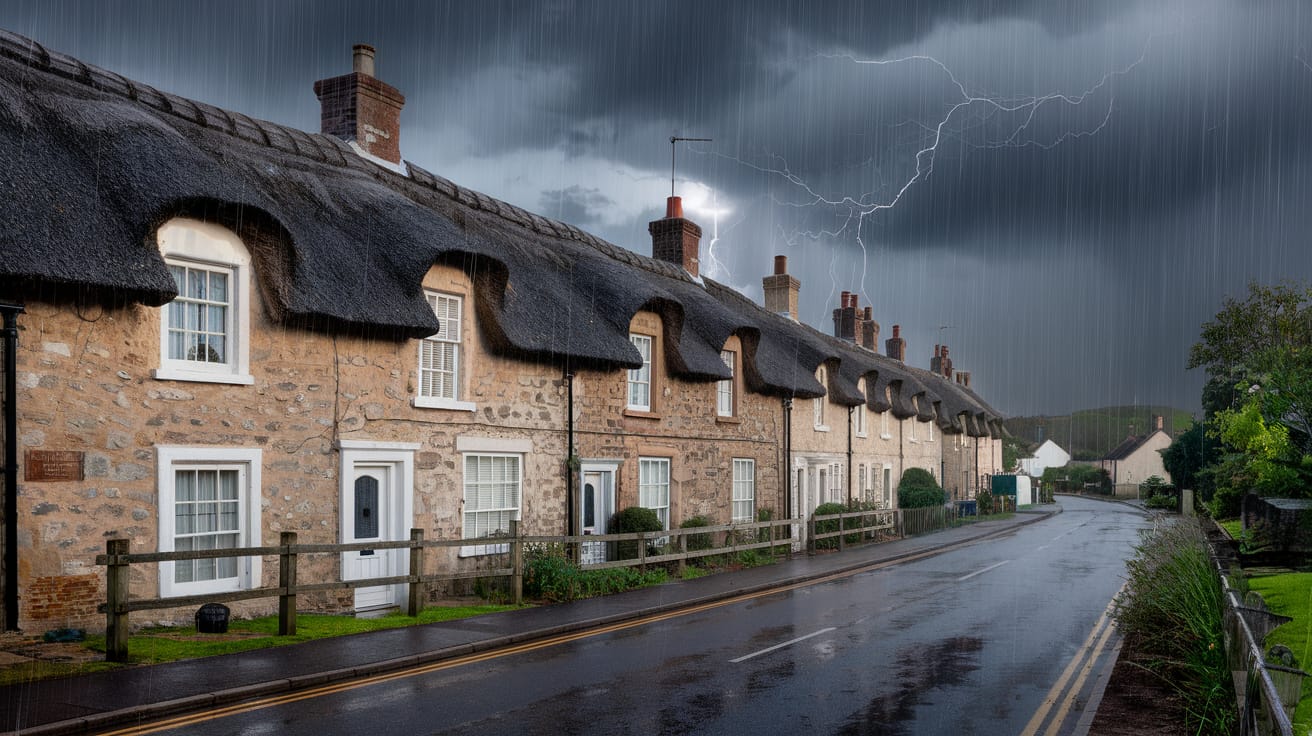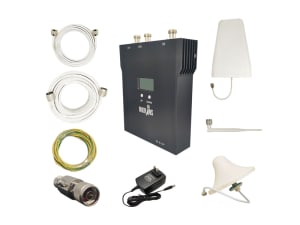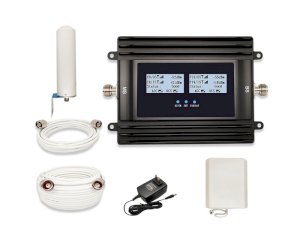
A 4G signal booster can improve mobile reception—it’s a solid fact. But the changeable weather in the UK, with its relentless torrents, biting winds, and occasionally sweltering sun and UV light, can impact the condition of the antenna, causing signal degradation and even early breakdown. Our today’s guide provides practical advice on how to protect your 4G booster antenna from the elements and extend its lifespan.
Why is protecting the booster antenna from weather really important?
The changing weather conditions in the UK can severely impact your 4G antenna. Leaving it unprotected can lead to:
- Signal degradation
Moisture seeps into cable connections, causing corrosion and weakened signal strength. Using coaxial cables that are properly sealed is crucial. - Physical damage
Heavy snow and strong winds can bend, crack, or even detach your antenna, especially if poorly mounted on its antenna pole or bracket. - Reduced lifespan
Constant weather exposure quickens wear and tear of your antenna, shortening its lifespan. - Costly replacements & downtime
Replacing a damaged antenna is an unnecessary expense and disrupts your mobile connectivity. - 5G vulnerabilities
Newer 5G antennas can be more sensitive to moisture and temperature changes due to the higher frequencies band involved.
Let’s break down how each element attacks your 4G/5G antenna:
- Rain
Water infiltrates cable connections, leading to corrosion, rust, and signal losses. - Snow & ice
Heavy snow or ice buildup adds weight, potentially bending or breaking the antenna or its mounting. Ice can also expand and crack antenna components. - Wind
Gale-force strong winds can loosen the antenna mount, causing misalignment and signal fluctuations. What’s more, strong winds can physically break the antenna. - UV radiation
Long exposure to the sun degrades plastic components, making them brittle, cracked, and prone to failure. This also weakens cable insulation. - Hail
Hail storms can cause direct damage to your antenna, cracking radomes or ruining sensitive internal elements.
Protecting your antenna: proven methods
The best strategies for safeguarding your 4G antenna are as follows:
Antenna protection covers and radomes
What they are: Protective housings made of plastic or metal that shield the antenna from the elements. Radomes are a specific type of cover designed to be transparent to radio waves.
Benefits: Offer excellent 4G antenna weather protection from rain, snow, wind, and UV radiation. They also help to prevent ice buildup.
Considerations: Ensure the cover is appropriately sized for your antenna. Choose a UV-resistant material for long term durability. Metal covers may slightly reduce signal strength.
UK examples: Search online retailers like Amazon UK or specialist antenna suppliers for “4G antenna radome” or “4G antenna weather protection cover.”
Sealants and waterproof tape
What they are: Special materials that create a watertight seal around cable connections.
Benefits: Prevent water intake, helping get rid of corrosion and signal degradation.
Considerations: Use sealant specifically for outdoor use, apply generously, and allow complete curing.
UK examples: Find “weatherproof sealant for outdoor cables,” “self-amalgamating waterproof tape,” or “electrical connection sealant” at B&Q, Screwfix, Toolstation, or electrical wholesalers.
Lightning protection and grounding
Why it’s important: Lightning strikes can devastate your antenna and connected equipment, causing a fire hazard. Grounding, in turn, provides a safe path for electrical current to earth.
How to do it: Connect the antenna pole to a grounding rod using heavy-gauge copper wire. A lightning protector on the coaxial cable can lead to your 4G/5G booster.
Important note: Lightning protection is a serious matter. If you’re unsure about grounding, you’d better consult a qualified electrician.
UK considerations: UK building regulations (BS 7671) have specific requirements for antenna grounding, so always comply with them.
Cable connection protection
- Opt for connectors that are designed for outdoor use with built-in seals.
- A small amount of dielectric grease on connector threads will prevent corrosion and improves water resistance.
- Properly secure cables to prevent flapping in the wind, which damages connectors over time. Also, use cable ties or weatherproof clips.
Regular antenna maintenance
Schedule routine checkups: Inspect your antenna at least twice yearly: spring and autumn.
Look for warning signs: Check for cracks, corrosion, loose cable connections, water stains, and any physical damage.
Address issues promptly: Repair any damage done by weather immediately to prevent escalation.
Conclusion
Taking definitive steps to protect your 4G antenna from rain and other elements helps you save your investment. Follow the tips from this guide and make sure your mobile connections are strong and consistent day and night—no matter good or bad weather in the UK today!
FAQs
Can I climb on the roof to inspect the antenna myself?
Yes, but if you’re unsure about your safety on the roof, hire a professional. S/he has the necessary experience and the right equipment to check your antenna for any issues.
What type of sealant should I use for my antenna connections?
You can try silicone-based sealants, but make sure they are UV-resistant and weatherproof. Self-amalgamating weatherproof tape is another good choice for a waterproof seal.
My antenna has some minor corrosion. Can I just clean it off?
Yes, you can just remove minor corrosion with a wire brush and a corrosion inhibitor.
Are there any specific UK building regulations I should be aware of when installing and protecting my antenna?
Yes, it’s essential to check your local building regulations about antenna installation and safety. Contact your local building control department for more information.








